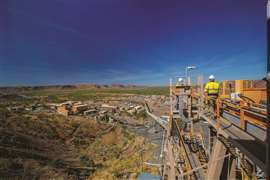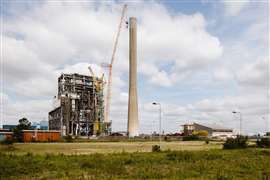7 technology trends in construction for 2023
09 February 2023
Jim Stephen, account executive for construction solutions at Microsol Resources looks at the potential technology trends for construction this year.
Many industries benefit from modern technology, such as AI, automation, and robotics. And the construction industry is no exception.
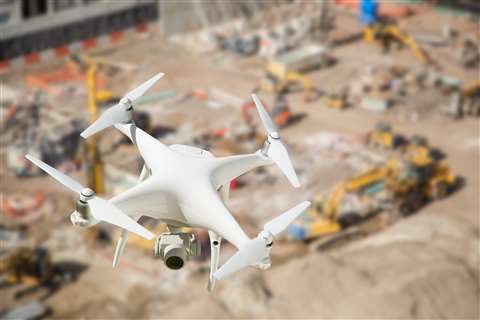
Just like it happened with architecture, innovative new technologies are making construction safer, more efficient, environmentally friendly, and data-driven.
7 technology trends in construction for 2023
1. Drones
It seems like every industry is finding a way to utilize drone technology to improve efficiency.
While drones already have a place in the construction industry, they are expected to take on an even larger role thanks to recent improvements.
Drones are more sophisticated and AI-oriented than ever. They can now offer real-time aerial imagery, 3D lidar scans, BIM capabilities, progress tracking, safety monitoring, inspections, and more.
These drones also collect a wealth of data to help managers and engineers make informed decisions and understand the project’s progression.
The benefits of drone technology in the construction industry are endless. Over time, it’s likely more potential benefits will be identified, making drones one of the most valuable technologies in the industry.
2. 3D Printing
3D printing, like drones, is making its way into many industries as people recognize the immense potential of this technology.
Engineers and designers can 3D print buildings from digital models and drafts.
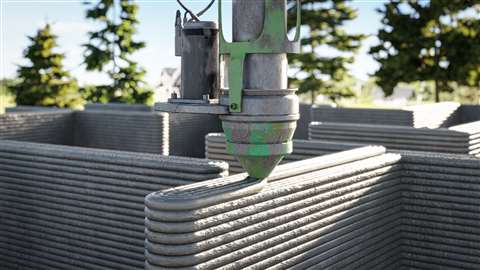 The use of 3D printing in construction is growing, according to research. (Photo: AdobeStock)
The use of 3D printing in construction is growing, according to research. (Photo: AdobeStock)
But 3D printing can do more than make a mini model of a building. People can use 3D printing to manufacture lightweight components of a building, like steel nodes and cement molds.
The power to turn a digital file into a 3D object, potentially on a construction site, improves efficiency. Workers don’t have to wait for manufacturers to deliver materials and can create items as needed.
3D printing in the construction industry is expected to grow annually by about 90% compounded, according to a recent GVR report. It may seem like 3D printing is entering the construction world slowly, but it’s picking up speed.
While it may sound futuristic, we are not far from constructing whole houses and buildings using 3D printers, which can lead to greener construction practices using recycled materials or renewable resources.
3. Green Technology
Speaking of greener construction practices, the industry as a whole is pivoting toward more environmentally-friendly techniques. Many construction companies are opting for more sustainable practices, but it’s also becoming mandatory in many places.
New and innovative tools help engineers and architects design more energy-efficient buildings that are easier to maintain.
Green technology that has the potential to revolutionize the construction industry includes energy-efficient analytics, ethical and sustainable materials, smart lighting, solar polar, geothermal systems, and more
As mentioned, 3D printing is a green technology that can create more sustainable materials that also improve the energy efficiency of a building.
4. Data analytics
In this modern world ruled by computers, data is king. From the medical field to marketing companies to legal firms and everything in between, comprehensive data and insightful analytics are invaluable.
It’s hard to capture the extent of data’s potential in the construction in
 Managing and analysing data can improve the work process in construction. (Photo: AdobeStock)
Managing and analysing data can improve the work process in construction. (Photo: AdobeStock)
dustry in this short section, but we’ll try.
Data analytics can provide real-time safety information, help managers project accurate timelines, improve energy efficiency, reduce costs, monitor performance, and improve workflows.
Information is the key to improving any process. Analytics can enhance efficiency, quality, and safety simply by providing managers and workers with cold hard data.
And one of the best ways to collect data in the construction industry is with an IoT system.
5. Internet of Things
The Internet of Things or IoT is a network of physical objects that connect and relay data to a computer system.
For example, a taxi company can receive real-time data on their vehicles, such as maintenance needs, mileage, and geolocation.
IoT is making its way into the construction industry, improving safety, performance, and on-site accountability.
An IoF can connect to compatible drones, smart hardhats, vehicles, and tools to provide managers with up-to-the-minute information.
Smart hardhats can track the location of workers, ensuring no one is in the wrong place at the wrong time. Connected tools can be monitored for maintenance needs or malfunctions.
An IoT system can also make it easy to collect performance analytics and progress data, giving managers and clients an idea of the productivity and execution taking place.
6. Augmented reailty
Augmented reality (AR) may seem like a technology suited to more recreational activities, like gaming, but it also has a place in the construction industry.
AR is an enhanced or augmented version of an existing physical environment that uses computer-generated input.
7. Virtual reality
Similar to AR, virtual reality (VR) has a range of uses in the construction industry. VR is an entirely alternative and computer-generated digital environment that wholly replaces the existing environment with an artificial setting.
Both AR and VR can help managers, workers, designers, clients, and everyone else involved visually understand the project goals.
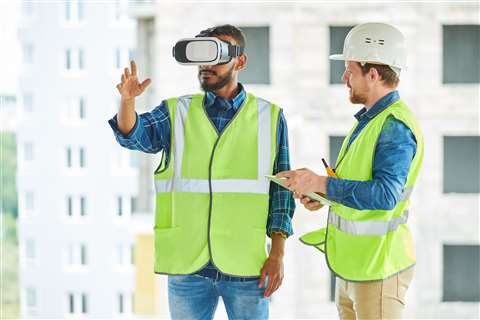 VR allows people to see how a building will look before it’s built. (Photo: AdobeStock)
VR allows people to see how a building will look before it’s built. (Photo: AdobeStock)
A customer can walk through their remodeled kitchen before any remodeling starts, or a business owner can explore a brand-new building before construction begins!
Architects and engineers can experience these environments before the project begins, allowing them to assess potential issues or logistical problems.
What changes will technology bring to construction?
The integration of these innovative technologies is revolutionizing the way projects are designed, executed, and managed.
They not only increase efficiency and accuracy, but also enhance collaboration and decision-making, leading to improved project outcomes.
The construction industry undergoing a rapid technological transformation and companies that adopt these technologies will have a competitive edge in the market.
About the author
 Jim Stephen, account executive for Construction Solutions at Microsol Resources. (Photo: Microsol Resources)
Jim Stephen, account executive for Construction Solutions at Microsol Resources. (Photo: Microsol Resources)
Jim Stephen is an account executive for construction solutions at Microsol Resources based in New York.
He is focused on delivering the Autodesk Construction Cloud portfolio to help general contractors, subcontractors, and construction management firms across the U.S. help refine their workflows, reduce risks, and maximize their profit margins.
He has over five years of experience delivering software solutions to international and award-winning architecture, engineering and construction firms.
He is an avid reader, a lifelong learner, and is passionate about the built environments.
STAY CONNECTED


Receive the information you need when you need it through our world-leading magazines, newsletters and daily briefings.
CONNECT WITH THE TEAM








